



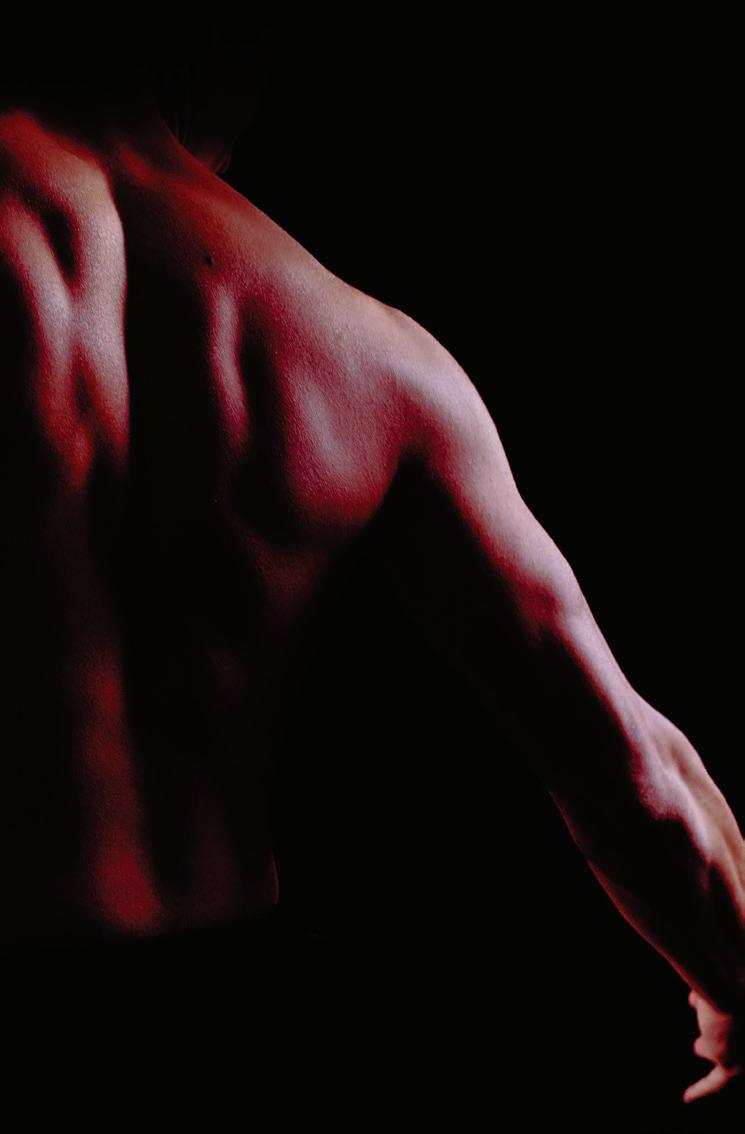
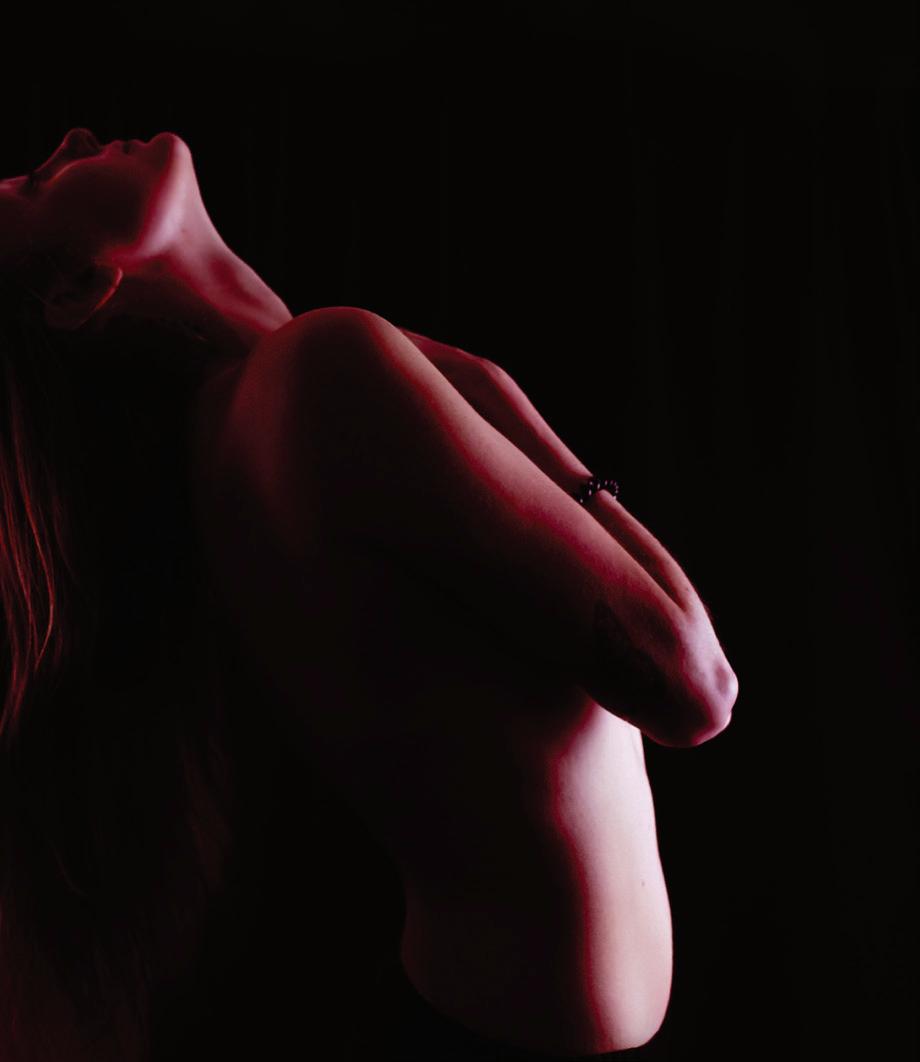



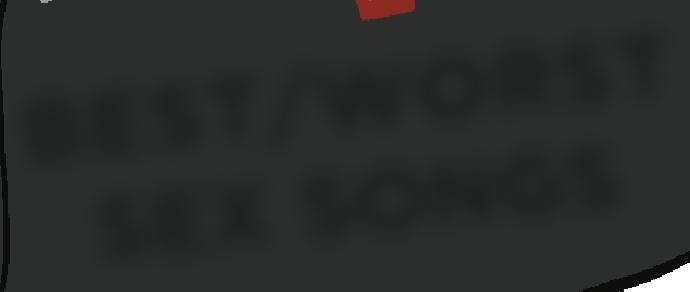




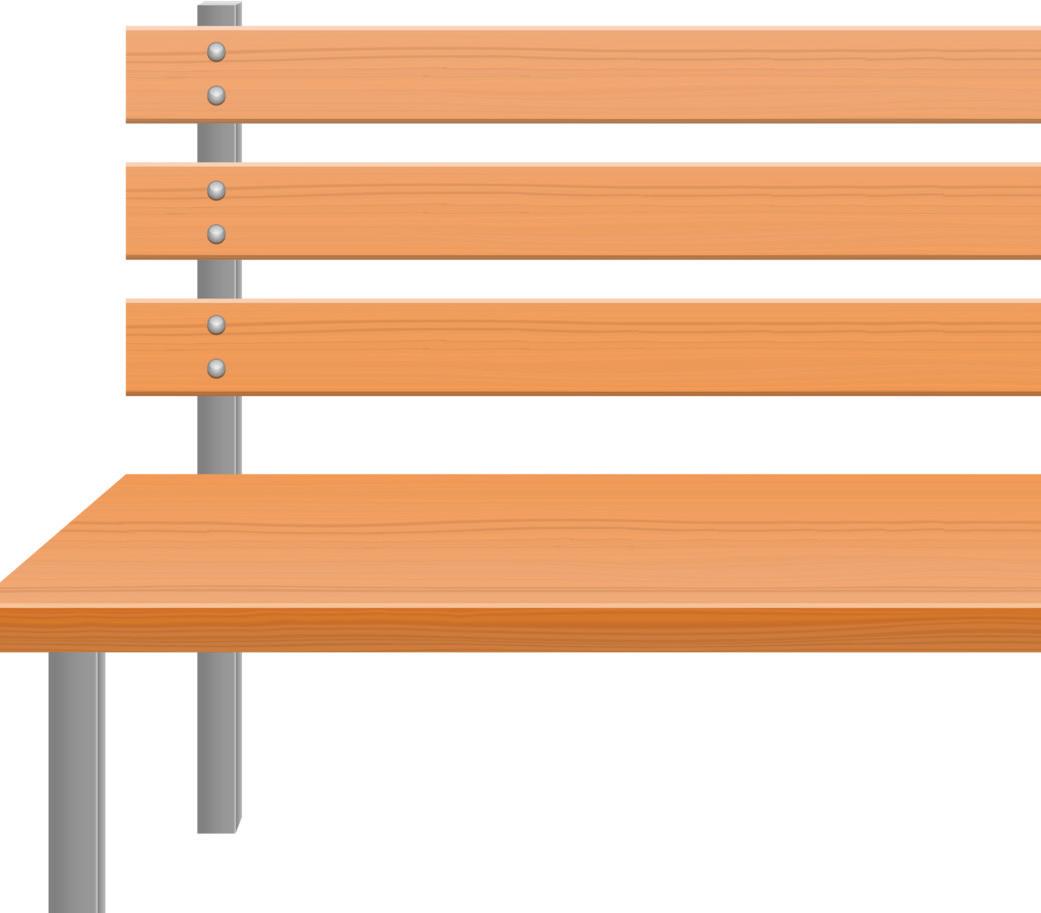
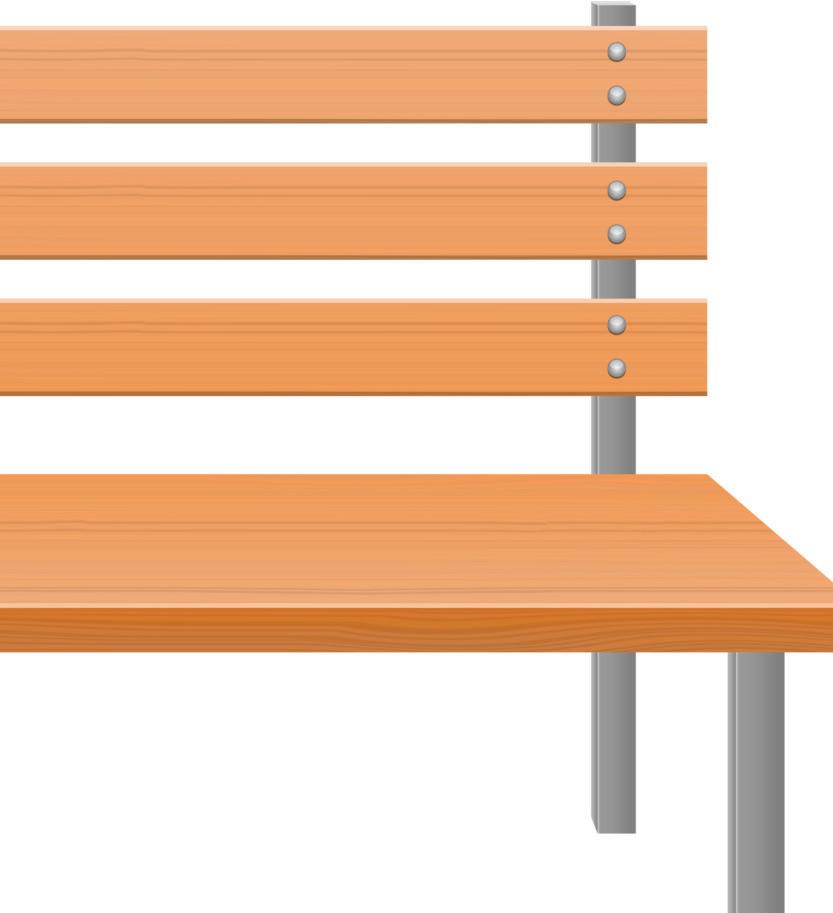



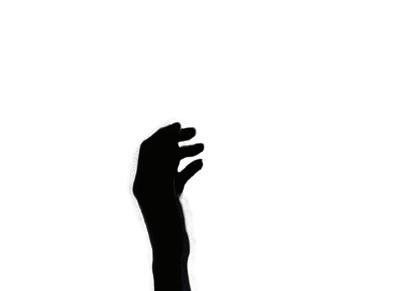

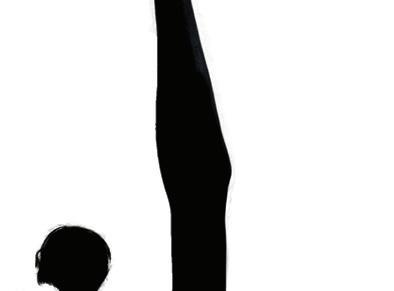

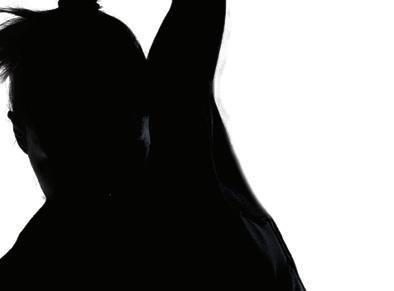











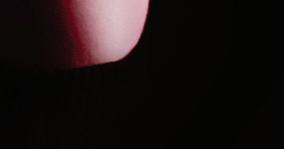



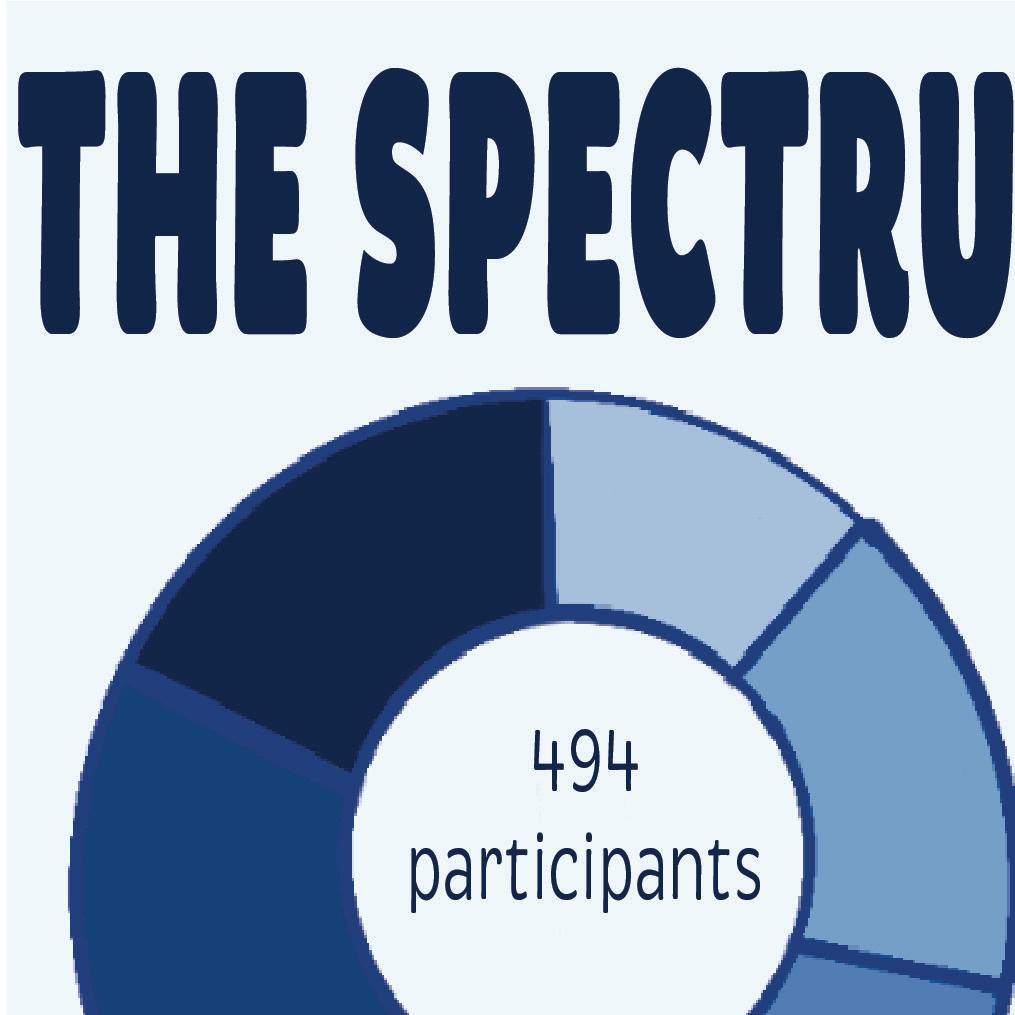
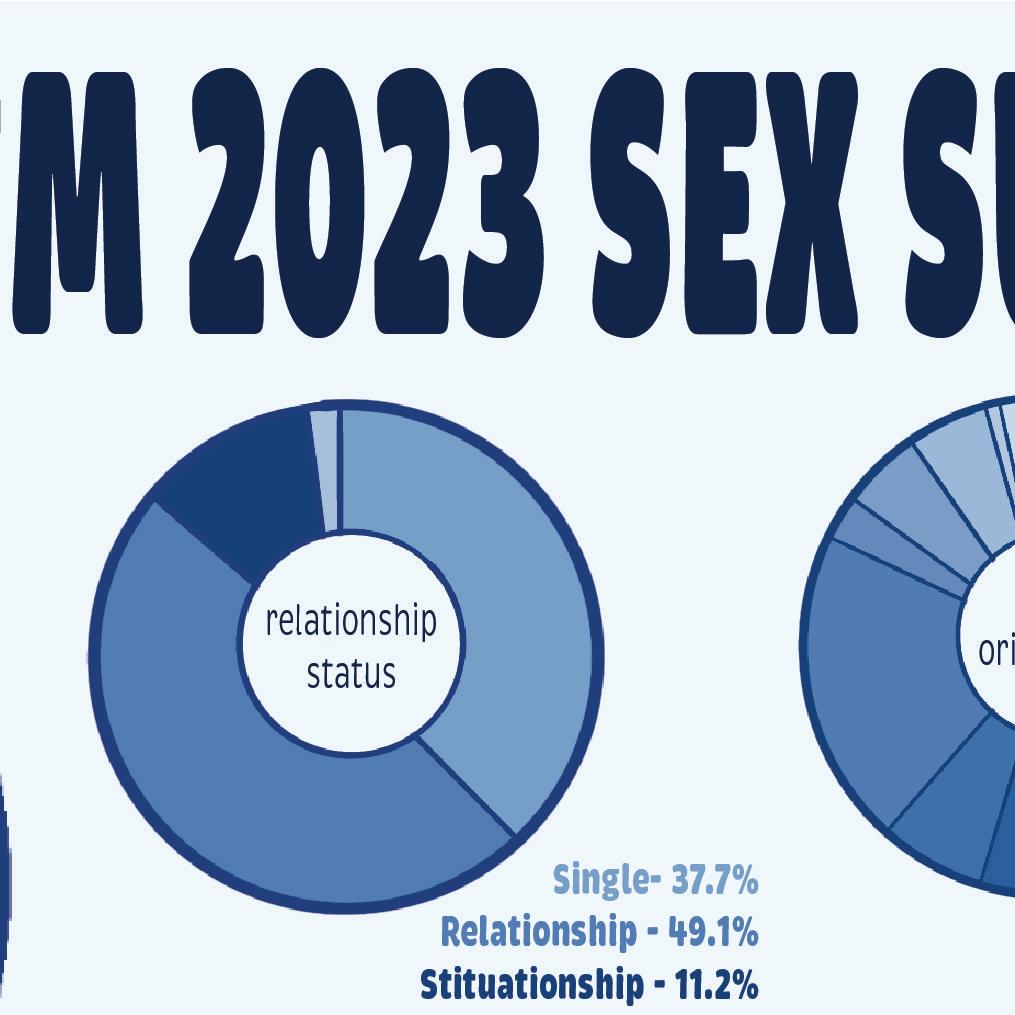

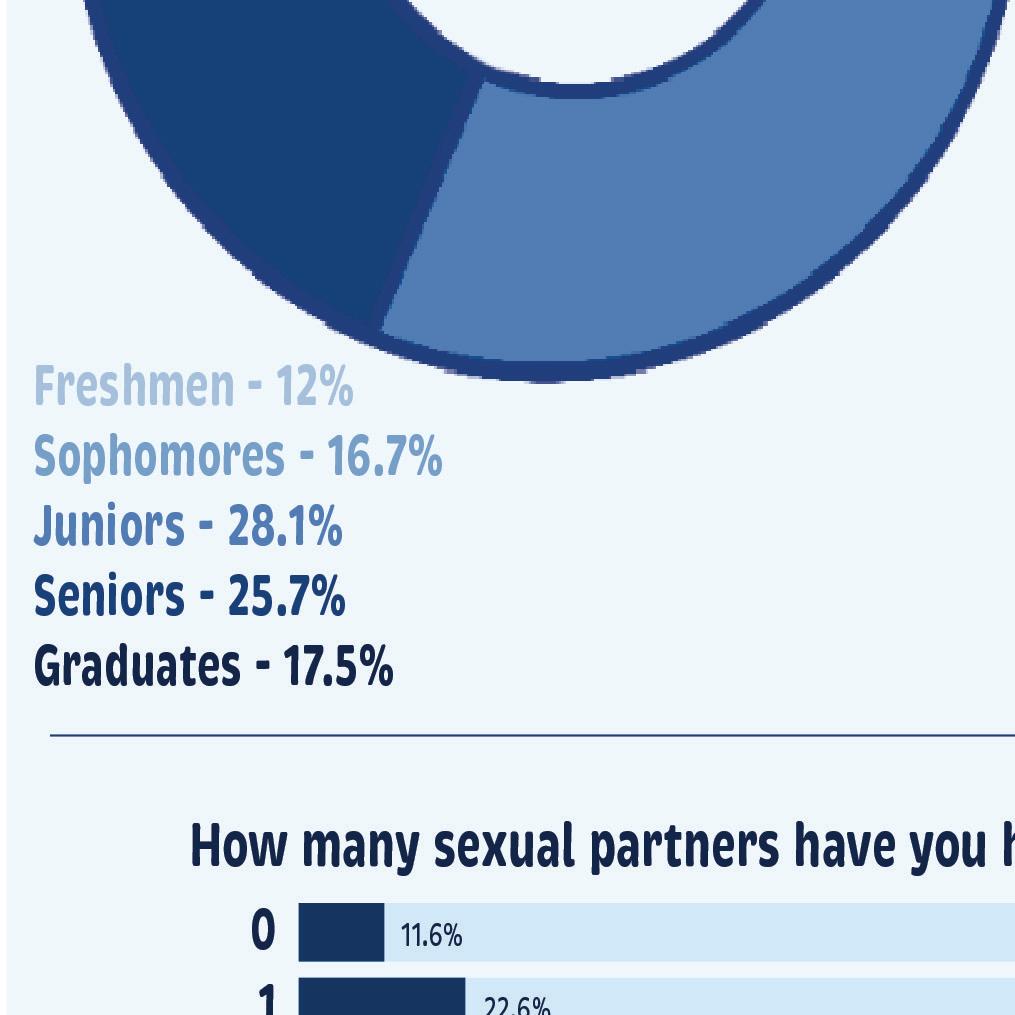

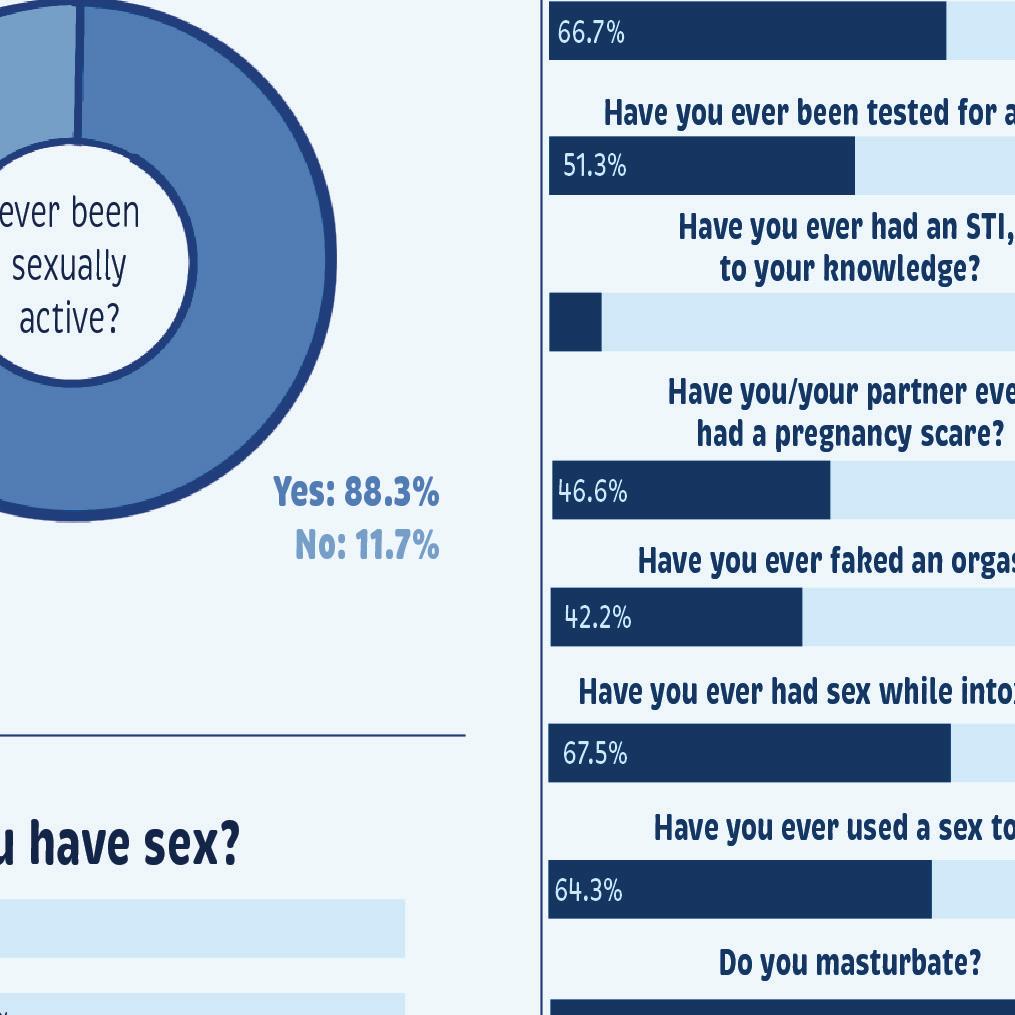





















































The SA e-board speaks about new initiatives including increased communication with clubs and re-worked club finances
VICTORIA HILL SENIOR NEWS EDITORBecky Paul-Odionhin, Sammi Pang and Unnati Agarwal were elected to serve on the SA e-board for the 2023-2024 academic year. Paul-Odionhin and Pang were the first president and vice president to be reelected in 15 years, while Agarwal was elected as treasurer.
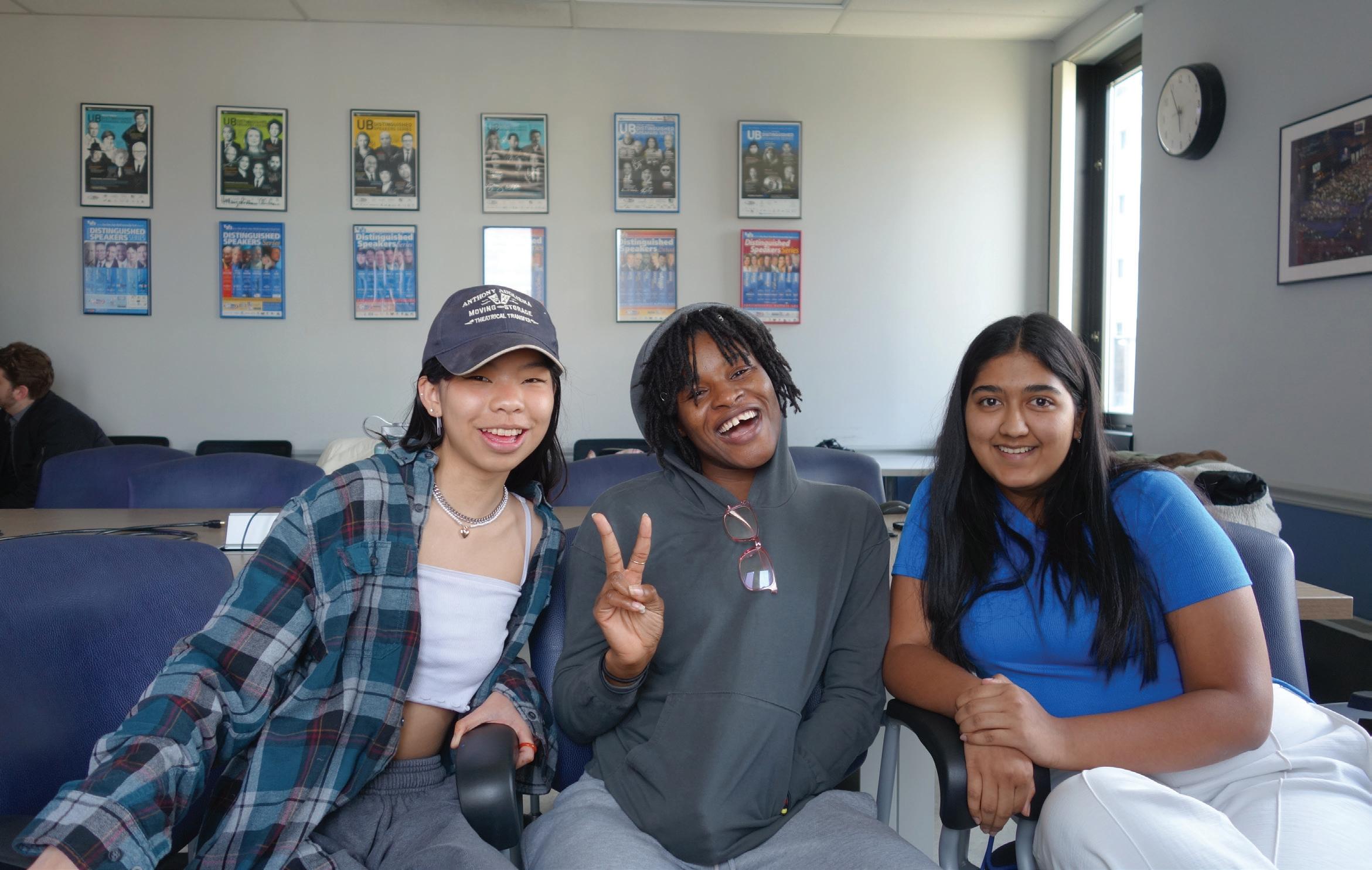
The Spectrum sat down with the three eboard elects to discuss their plans for the upcoming year and the initiatives they want to incorporate.
The following has been edited for clarity and length.
The Spectrum: How do the two of you feel about being reelected?
Sammi Pang: “I’m really surprised because, according to our pro staff, there hasn’t been a reelection in the e-board for 15 years. So the fact that we did it, and also that students trust us enough to run again, is super humbling. We’re really just thankful that we had so much support in the campaign from the people that we’ve worked with this year.”
Becky Paul-Odionhin: “I’m really excited. There’s a lot of things that we’re working on. It’s not going to be like, ‘Let’s finish it up and do a speedrun version, now we’ve got time.’”
SP: “It’s also really nice for the clubs. It’s really nice to have some clubs come in and say thank you. We noticed a lot of clubs during the week reached out.”
TS: What plans do you have for the next school year?
SP: “I think just continuing what we have planned now. On the top of my list this summer is virtual club training on Brightspace, to make it accessible for all clubs. We’re currently working on having better processes for our neurodivergent staff, because that’s a very underrepresented group on campus and not a lot of organizations and departments around campus have that. So after we established that, we hope to extend the outreach to students and neurodivergent communities there, as well as just providing better training to our council coordinators, which is also a very underutilized position. And continuing my work with the Sports Council. Once that’s resolved, we’re going to do the Engineering Council.”
BPO: “I guess the training part, which has already started, we just got access to Brightspace, which is amazing. A huge thing we’re working on in the summer is that when clubs and students come back, SA is going to function different, but beneficially different. I would like to add, we are working on the credit card that we’re working on getting. We are gonna get that approved for Amazon, then over the next year we will work on utilizing that for gas cards and E-ZPasses — just general purchases.”
TS: What are your plans to increase communication with clubs for the next school year?
SP: “Meeting with each individual club has really worked out because I hear issues and concerns from finance and the other staff around me. It’s also good to just hear it directly from the club. And then I also want to utilize the council coordinators, which I feel is a very underutilized position. Mostly because the election got messed up last year, so I only got to them halfway through the year. I want to establish that connection between the council coordinators and the clubs because I’m just one person, so it’d be difficult to oversee like 200 clubs. And then my club services department: I’ve since separated the director of club services from my position. The new director is Gracie McDowell, and she’s developing her department. It’s just better in terms of informing clubs when they’re meeting the requirements. I also hope to pass a resolution to get rid of SA participation points, because I just don’t think that’s utilized right now.”
TS: Is there anything that you want to say to the undergrad student body that reelected the both of you?
BPO: “Thank you for giving us time, because I think a lot of people forget that we come in with all these ideas to change things. We’re not trained to do this, SA is run by students to give them opportunities to learn, and sometimes we can’t do things right then and there. We can’t give it to them fast. So we’re really grateful that they’ve given us time to implement all of these things.”
SP: “I would say thank you for reelecting us. Our tenure this year was filled with ups and downs, and a little bit of controversy. And I think that’s the same with every eboard that comes in, so to the people who didn’t realize this, thank you for acknowledging that we are a new e-board and we have made some mistakes, but still trusting us to further grow and improve.”
TS: How are you feeling about being elected treasurer?
Unnati Agarwal: “I know that I was the only candidate, but I still feel really good that I got so many votes, and that so many people trusted me even though they didn’t know me personally. Also, I feel like now that I’ve come into this position, I see the amount of work that needs to be done. I feel like it’s a lot, but I feel like now it’s a part of my responsibility. So I’m really excited to work and make some good changes and even work on some things and ideas that were given out, but were not implemented.”
TS: What are some initiatives that you plan on taking during your term?
UA: “One of the things that we’re working on right now, is the Amazon credit card. I feel that it would be really, really helpful because right now it’s very difficult for clubs to order from Amazon. So I feel that will smoothen out the process as well. And also, they need to do a reimbursement so it will make things easier. But also the Brightspace training is something that a lot of clubs have told us about before that is going to make it a lot easier, like having modules specifically for finance. So that’s one of my summer goals.”
TS: What is one thing that you are excited about in your new role?
UA: “There are just too many things to be excited about, but one thing that I really liked was the SA staff. When I came in, everybody was so welcoming. Everybody reached out to me and you know, it feels like it’s work but it’s also a very comfortable place that I’m in. I’m really excited to get to know the staff more and get input from them because they’re the people who I feel know a lot about SA.”
TS: Is there anything that you want to say to the student body?
UA: “I would also like to say thank you to everybody who trusted me and chose me. But more importantly, I want to reach out to them and tell them that if they have any questions, they can always reach out to me.”
Email: victoria.hill@ubspectrum.com
HAYDEN AZZINARO ASSISTANT SPORTS EDITOR
Lil Yachty, Coi Leray and Cordae will perform at Spring Fest 2023, the Student Association (SA) announced in an Instagram post Friday.
Undergraduate students will be able to reserve free tickets starting on Wednesday, according to SA’s website. Students can also request a single ticket for a guest while supplies last.
Performances will be held on Friday, May 5 in Alumni Arena or the Governors Parking Lot. (The SA says it will officially announce the location “as soon as possible.”) Doors will open at 6 p.m., with the show starting at 7 p.m.
Lil Yachty, a rapper from Georgia, came into the rap scene with his 2015 single “One Night” and his debut mixtape, “Lil Boat,” which peaked at 106 in the US Billboard 200. Since then Lil Yachty has received two Grammy nominations for his songs “Broccoli” and “Donda.” He has also put out 13 platinum tracks, including “Minnesota,” “Oprah’s Bank Account,”

and “Yacht Club.”
Coi Leray, a Boston rapper, debuted her first album, “Everythingcoz,” in 2018. She’s released popular songs like “Players,” which went as high as No. 9 in the Billboard’s Hot 100. Leray was also named the best female rapper in 2021 by BET (Black Entertainment and Television). In t2022, she won a platinum track from the RIAA (Recording Industry of America) for her hit song “No More Parties.”
Cordae is a North Carolina rapper who has worked with artists such as Eminem, Roddy Ricch, Gunna and Lil Durk. The 25-year-old released his first studio album, “YBN: The Mixtape” in 2018. The album was a collaboration with YBN Nahmir, Almighty and Cordae. Five years after his debut album, Cordae is a five-time gold track artist for songs like “Broke As F—k,” “Have Mercy” and “Kung Fu.” His latest album, “From A Bird’s Eye View,” features artists such as Gunna, Eminem, Lil Wayne and Roddy Ricch.
Exploring lesbian sexuality isn’t easy in a male-dominated world
scended into sex?
This is just one of the first issues that lesbians run into while exploring their physical sexuality: a lack of inclusive sex education.
KARA ANDERSON SOCIAL MEDIA COORDINATOREveryone has the right to f—k, to get f—ked, and to abstain from f—king at their and their partner’s consensual discretion.
But not all f—king is created equally.
For enjoyers of sex’s physical intimacy and the relief from hormone-fueled horniness that only an orgasm can sate, there will always be obstacles in getting to the actual act of f—king. Sometimes it’s a lack of self-confidence that causes one to turn to more automanual means, sometimes it’s the inability to find a person that suits one’s fancy and sometimes it’s simple bad luck.
However, for lesbians — cis or trans — it’s also systemic.
The inequality of access to f—king is a pervasive issue for the modern-day lesbian living in a world still entrenched in a maleoriented (or, more accurately, phallic-oriented) society that doesn’t recognize other forms of sex, leaving many lesbians in the dark.
If the standard metric for sex is penile penetration of the vagina or anus (your hole, your choice), how do lesbians know at which point heavy petting has tran-
I won’t make a blanket statement and say that no schools teach the ins and outs of sex involving all genders and genitalia, but I can state pretty confidently that the majority of high school health courses aren’t explaining the mechanics of lesbian sex. The closest my health teacher got to broaching the subject was a lesson on the correct use of dental dams, which involves only the oral component of lesbian sex.
In short, the classroom isn’t enough.
There’s always more organic sources: porn.
While we all know that any porn, no matter the category, is going to indulge in fantasy and present some lascivious lovemaking, lesbian porn is an even worse how-to guide for the real-life lesbian than straight porn is for their heteronormative counterparts.
The porn accessible to those first coming into their sexuality — typically teens and young adults — is either cheap or free and does not cater to the pleasure of the vagina-haver.
Instead, accessible lesbian porn is all too often a cesspool of fetish work for a male penis-haver to jerk off to. The acts being performed aren’t for the pleasure of the vagina-havers in the video or the vaginahaver watching the video, but for the penis-haver lacking an intimate understanding of clitoral contentment.
Queer-friendly porn does exist — but
usually for a fee. Porn that will be enjoyable for the lesbian and porn created specifically for the gratification of a vaginahaving audience is often locked behind a paywall.
There’s nothing wrong with paying for porn and giving sex workers the monetary support they deserve — it’s just not always accessible for someone working a minimum wage job or paying for school.
Can the lesbian then turn to their peers? Can they collect anecdotes and advice from those closest to them to apply to their own sex lives?
More often than not, the answer is no.
Because we live in a heteronormative society, the majority of other vagina-havers are most likely engaging in sex with penishavers.
Even among my friends who are queer women, only a few have had sex with people other than cis men. As a young lesbian, I didn’t have a trusted person to turn to ask, “How the f—k do I f—k?”
Many of my queer female friends will tell you that they avoid lesbian sex simply because they don’t know how to actually f—k another woman.
It’s an ouroboros of sexual frustration. The f—king does not happen because the f—king has not happened.
And while some queer vagina-havers may find their outlet in a penis, the lesbian, more often than not, does not have this mechanic to turn to.
There’s of course nothing wrong with f—king a penis-haver — your hole, your choice. But that still leaves the lesbian to trudge forth and forge their own path of
fornication.
But another problem quickly arises: Where does the lesbian go to f—k?
There’s an easy answer here: dating apps.
Tinder is certainly well known for hookups among the hetero-minded, and even gay men can turn to Grindr for a quick gritty get-down.
Hookup culture has its toxic traits, but such a culture — perfect or not — is almost nonexistent for lesbians.
As any lesbian that doesn’t live in a major city knows, lesbian Tinder provides about an hour’s worth of content before you have seen all the people who may have an interest in you.
So can the lesbian then go find sexual partnership in the wild?
Well, not exactly.
Like all other queer people, lesbians lack safe spaces to meet potential sexual partners, especially ones living outside the confines of a major city. Upstate New York isn’t exactly known for its gayborhoods.
Unlike their straight counterparts, who can meet potential partners in a multitude of social settings (dive bars, clubs — hell, even grocery stores), it’s not always safe for a lesbian to pursue their interests.
Outside of designated queer spaces, pursuing someone that is not the opposite gender can incite violence, social retribution and homophobia.
The lesbian is left at a systemic sexual impasse.
It feels unfair, to be a body in want of another consensual body, but with limited means to create a plan for this pleasure.
Email: kara.anderson@ubspectrum.com
Why society needs to take lesbian relationships more seriously
affection in lesbian relationships “count?”
While this isn’t the fault of straight women, men often fetishize lesbians for their own sexual gratification. To them, lesbians are simply an aesthetic, something to watch and consume. And the more men seem to express interest in woman-onwoman affection, the more straight women will play into that interest. The cycle continues.
AMY MASLIN SPORTS EDITOR

I can’t count the number of times I’ve seen a woman posting a picture of herself kissing a friend on the lips during a night out — and many of them have boyfriends. “It’s with another girl,” people will all too often say. “That’s not cheating.”
But this concept, however seemingly benign, demeans relationships between women. If kissing your friend in a bar “doesn’t count,” then what makes physical
And this is happening across the country.
According to Pornhub’s 2022 Year in Review, the most searched word in the U.S. was “lesbian” — and that’s not because the 0.7% of Americans who identify as lesbian are watching porn all day. “Lesbian” is also ranked fourth in the world for most searched categories and is the most popular search term among men.
Experimenting and being affectionate
with your friends is perfectly normal. I’m not going to tell a woman that she can’t kiss her friend. But when women eroticize lesbian relationships to turn straight men on, that’s when it hurts queer people like me.
Growing up gay, the thought of even hugging my friends terrified me. I didn’t want them to think that I was into them or anything. It took me until the age of 20 to feel comfortable showing my friends physical affection — and even now, I sometimes catch myself flinching.
I’m not alone. I’ve spoken to other lesbians who have felt the same way. It’s all fun and games when straight women post pictures of themselves making out in a dive bar, but homophobia denies us that same liberty.
And the fetishization of women isn’t confined to nightlife — it’s leached into
mass media too. Growing up, most lesbian relationships on TV or social media were one-dimensional, sexualized relationships. It gets to you. It tells you that you will never be in a real relationship. That you can’t have what your straight friends have.
And that takes a toll on queer women. People who reported more internalized homophobia also reported higher stress and lower relationship quality, according to Medical News Today.
It doesn’t matter if you have supportive people around you when the world is constantly telling you it’s not real.
Think about what you are doing and saying for a moment before you do it or post it. Not everything that seems meaningless really is.
Email: amy.maslin@ubspectrum.com
THURSDAY, APRIL 27, 2023 VOLUME 71 NUMBER 21
3,000
Do you have an interest in journalism, graphic design, photography, social media, advertising, cartoons or copy editing? The Spectrum is always looking for enthusiastic students who want to be part of our team. Join our 45-time award winning independent student newspaper for hands-on, realworld experience in your field.

Anyone interested in joining The Spectrum’s editorial staff can email Anthony DeCicco at: eic@ubspectrum.com.
The views expressed – both written and graphic – in the Opinion section of The Spectrum do not necessarily reflect the views of the editorial board. Submit contributions for these pages to The Spectrum office at Suite 132 Student Union or news@ubspectrum.com. The Spectrum reserves the right to edit these pieces for style and length. If a letter is not meant for publication, please mark it as such. All submissions must include the author’s name, daytime phone number, and email address.
For information on advertising with The Spectrum: VISIT: www.ubspectrum.com/advertising EMAIL US: spectrum@buffalo.edu
The Spectrum offices are located in 132 Student Union, UB North Campus, Buffalo, NY 14260-2100
preconceived, sexualized notions about pole dancing — are shocked. I’ve had to endure more than my fair share of anti-sex work jokes about me becoming a “stripper.”
My response is almost always the same: I explain that those jokes are problematic and contribute to the marginalization of a large group of people.
wanted to progress.
I showed up to class three times a week, and worked my way up to intermediate classes.
Over the past two years, pole dancing has encouraged me to feel proud of my body and embrace its capabilities. It’s truly meant for everybody and every body.
learned to be more in touch with my sensuality and express myself more freely. I’ve made connections with my fellow pole dancers, and they’ve provided me with so much support and encouragement as I trained.
KIANA HODGE NEWS EDITOR

When people find out that I pole dance, the reactions are mixed.
Some people are genuinely curious. They’ll ask me what crazy moves I can pull off and how much upper body strength is needed to do them. These interactions excite me and help me feel comfortable about sharing my passion with those around me.
But others — usually those who have
I wish the attitudes toward this transformative experience for myself and others would change. Pole dancing is an outlet that many use to feel liberated and empowered.
I remember walking into my first pole dance class. I was nervous but excited to try something new.
It was beyond challenging to grip the pole and pull off even some of the most basic moves. But instead of feeling defeated, I purchased a membership because I
Improving my stamina and strength over the years has given me the biggest confidence boost and a sense of sexual liberation.
The creativity in the routines and my control of the fluidity allows me to break free from society’s expectations of what people should be doing with their bodies.
Pole dancing is physically and mentally challenging, but nothing feels better than stretching my limits and mastering this form of art.
Being in a supportive pole studio, I’ve
Of course, there’s work to be done in the pole dancing community, too. While most of the community is fighting for sex workers’ basic rights, there are dancers who try to distance themselves from the origins of pole, posting videos of themselves using the hashtag #NotAStripper.
Although pole dancing is becoming more mainstream, I hope that society will recognize its many benefits, eliminate the negative stigmas associated with it, and mind their business. Let people do what they want with their bodies without oversexualizing them.
Email: kiana.hodge@ubspectrum.com
We never asked for all these labels
There’s a difference between being confident in my body and trying to show it off (which there is absolutely nothing wrong with).
Society loves to tell women what they can or can’t wear. What makes them sexy or ugly. We are always labeled.
VICTORIA HILL SENIOR NEWS EDITORWomen are objectified all the time.
It happens when we’re at school, in the gym or even just on the street.
There’s never a time when a woman feels she’s free of male judgment.
I shouldn’t have to think about the judgment I may face every time I’m picking out an outfit.
Fat, skinny, sexy, ugly: these are all labels women hear on a daily basis. We are always shoved into categories. We never asked for this.
It’s sadly something we’ve become used to. In middle school, you are labeled as “distracting” for wearing a spaghetti strap tank top that shows your shoulders.
In high school gym class, you’re labeled as “inappropriate” for wearing tight leggings that show your newly-developed
curves.
When you wear ripped jeans around your grandparents, they act like you’ve committed a cardinal sin.
Why do other people get to decide what to label me?
Women are scrutinized for the slightest bit of sexual expression.
It’s all so hypocritical. The media claims to advocate for women’s body positivity, for us to be confident and comfortable in our skin.
But when the cameras are off, we’re shut down and belittled for displaying even a shiver of confidence.
I should be comfortable with feeling confident. I shouldn’t have to worry about being sexualized.
top-five cosmetic procedures are nose reshaping, eyelid surgery, facelifts, liposuction and breast augmentation.
When we look at just how physically attractive media darlings are — especially those in reality TV shows, magazine covers and beauty product advertisements — we can see why so many Americans are getting body alterations to fit beauty norms.
A.J. FRANKLIN ASSISTANT FEATURES EDITOREvery day when I wake up, one of the first things I do is look at myself in the mirror.
I gaze upon the same face, eyes, complexion and body I see every day. Yet, every day I fall into the same complication, my self-love depreciates the longer I look.
My hair is too messy. My acne is coming in. I’m not tall enough. I’m too fat.
All of these thoughts add up, and by the time I’m done looking at myself, all I can think is: “I’m not enough and will likely never be enough.”
But why do I think this way?
Because the media has been telling me — and all of us — that to be sexy and beautiful we need to live up to the looks of a select few.
Beauty comes in various shapes and forms. But if the media is to be believed, beauty can be reduced down to a couple of social media models and influencers who are wearing makeup, posting photoshopped pictures and undergoing Brazilian Butt Lifts. Media messages about what beauty looks like are hurting all of us, but specifically young women and girls, with unrealistic beauty standards.
In 2020, Americans had more cosmetic plastic surgery procedures than any other country, with over 4.6 million surgeries performed, according to the International Society of Aesthetic Plastic Surgery. This number is over 2.7 million more than the second-ranked country, Brazil. These surgeries are wide-ranging. The
Men who are over six feet tall, have six packs and exhibit the most well-structured faces are deemed the most attractive, while the women with fair skin, clear complexions and the skinniest hips or biggest behinds are put on a pedestal. While behind the scenes many of them have gone through plastic surgery to achieve their looks.
Data has shown that girls as young as 6 are conscious of their body shapes and are self-conscious of their weight and shape.
A 1991 survey of 1,118 preadolescent children found that 42% of first-to-thirdgrade girls wanted to be thinner.
Whether intentionally or unintentionally, the media has been planting the seeds of unrealistic beauty standards in our daily social consumption, and it’s poisoning our communities.
One of the deadliest mental illnesses is anorexia nervosa, an eating disorder where individuals try to achieve or maintain a below-average weight through starvation or excessive exercise due to their distorted body image and a fear of being overweight. Eating disorders affect about 9% of Americans and result in 10,200 deaths a year, according to Harvard University.
Yet, the more I look through Instagram, the more I see the platform’s algorithm highlighting individuals — predominantly women — who fit these hurtful beauty norms.
I have the option to close social media apps, but I have to walk past magazine covers, billboards and posters featuring all the same models. They star in most of my
favorite shows. I view them in pop-up ads on all my personal devices.
There is no way to fully escape.
I am trapped in the matrix of what a beautiful and sexy person “looks like,” and sadly, I’ve been falling for it. I fear that I’ve just become a part of the algorithm.

Increasingly, media companies are employing AI-based facial analysis tools to rank what content is beautiful and attractive.
AI gathers its data from a wide variety of data sources, but most AI-generated content is not filtered out for inaccuracies and prejudice.
With drastic new steps in digital technology, we are making the definition of beauty even more exclusive.
AI algorithms have already indirectly led to the creation of “Instagram face,” which can be attained by editing photos to make your nose smaller, eyes bigger and lips fuller. People do this to get prioritized for recommendation by social media algorithms, according to MIT Technology Review.
These same algorithms also give higher attractiveness rankings to white women.
Many social media users, especially women and girls of darker skin tones, internalize these messages and genuinely believe that they need to change themselves to fit these unrealistic standards. Some even try to make their skin lighter with filters and skin whitening.
Amira Adawe, founder and executive director of BeautyWell, an organization that aims to end skin-lightening practices, conducts workshops where she informs darkskinned girls about the dangers of social media filters lightening their skin.
“They think it’s normal. They’re like, ‘Oh, this is not skin-lightening, Amira. This is just a filter,’” Adawe told MIT Technology Review. “A lot of these young girls use these filters and think, ‘Oh my God, I look beautiful.’”
Snapchat lenses are used by 200 million
Women will always be oversexualized because of the masculine norms that objectify our body parts, which we have no control over.
How is it fair that I can’t wear a sports bra at the gym without getting reprimanded and told to cover up, but guys can wear tank tops with the sleeves cut all the way down to their torso?
The double standards for being sexual are unfair and sickening.
If a man sleeps around, he gets praised. But if a woman does it, she gets shamed and loses her respectable image.
We need to break away from these stereotypes and allow women to live their lives free of judgment.
Email: victoria.hill@ubspectrum.com
active users daily, a Snapchat spokesperson told MIT Technology Review. Some of these filters lighten users’ skin tones. Instagram and TikTok also have filters and automatic enhancement features that lighten skin automatically.
The skin-lightening beauty standard has built a national skin-whitening empire. The skin whitening industry makes $8 billion in global revenue every year, according to CNN. Women account for 80% of sales worldwide. This booming industry is expected to increase its profit margins by 50% within the next six years and social media is fueling the market for these products.
Many skin-whitening products are sold and/or promoted on Instagram, Facebook and TikTok. Many of these products also contain harmful ingredients like steroids, hydroquinone and mercury.
Sure, there is a fair share of no-makeup and plus-size campaigns, but mass media has made many of our cultural beliefs more uniform. And with unity comes danger.
It’s hurting our communities. It’s deceiving us into believing that we need to change our appearance — even if it hurts to do so — to fit some arbitrary societal beauty standards.
Remember that just because something’s in the media doesn’t mean it’s true.
Look in the mirror and point out what makes you beautiful and sexy rather than focusing on what societal messaging deems imperfect.
If there is one thing you take away from this, please remember to be conscious of how you speak and treat others, especially women. Somebody who’s been led to believe they’re ugly might be listening.
Remember to let those around you know that they are beautiful and sexy, just like you. Email: aj.franklin@ubspectrum.com
The
is a long-standing joke… that we’re falling for We are beautiful and perfect as we are, but the media wants us to think that’s not the case
The UB Student Association (SA) Senate voted unanimously to raise wages and stipends for a wide range of SA employees — including the president, vice president, treasurer, council coordinators and 36 hourly positions — at its meeting on Monday. The raises go into effect on May 21.

The move, which is intended to attract student employees, will raise wages for SA’s student employees from $15-15.50 to $18-18.50 per hour, an increase of about 20%.
The Senate also voted to raise stipends for the SA e-board (president, vice president and treasurer) to $375 per week. SA e-board members currently make a flat annual stipend of $15,750.
That vote comes just a week and a half after SA president Becky Paul-Odionhin and vice president Sammi Pang were reelected to their positions for the 2023-24 academic year.
The senate also approved stipend increases for SA’s seven council coordinators, who will now earn weekly stipends of $180. The student affairs director will get a weekly stipend of $216, and the elections and credentials chairperson will make a weekly stipend of $144. The senate’s chairperson, previously an unpaid position, will also get a weekly stipend of $120.
It remains unclear how many weeks out of the year SA employees will earn stipends. An SA spokesperson did not respond to a Spectrum request for clarification in time for publication.
Will Eaton, the SA chief of staff, told senators the wage increases will match
inflation and keep SA competitive with other employers. He said that wages last increased in 2017 and cited Aldi, Campus Living and Burger King as employers with more competitive rates than SA.
“We’ve lost our competitive edge in terms of what we pay our staff,” Eaton said. “$15 is not what it used to be.”
The SA last increased stipends for eboard members, the chief of staff, council coordinators and other top SA employees in the spring of 2019. Hourly wages for
most SA employees were not increased at that vote.
“This will help [SA employees] become better workers, but more importantly, better students,” Matthew Dowd, the hobby council coordinator, said.
Matthew Dowd is also a Spectrum staff writer.
To avoid conflicts of interest, separate votes took place for each position’s wage increase. Senators who are considering holding those positions in the next aca-
Four official complaints have been made at UB regarding public lewdness or having exposed genitals in public since 2021, according to UPD Deputy Chief Joshua Sticht.
These incidents were reported in parking lots, Lockwood Library, Alumni Arena and the Student Union. Sticht told The Spectrum that while the university has only received four official complaints, the numbers “do not reflect the amount of times UPD has checked on couples being intimate in parked cars.”
The consequences that follow from each UPD encounter are different, according to
Sticht.
He said that if the individual is not a current student, UPD will often arrest and ban the person from the university. If the individual is a current student, UPD may still arrest or refer the person to conduct. In the cases where police catch couples in parking lots, Sticht said UPD “checks the welfare of the parties involved to ensure that everyone involved is consenting and not intoxicated to the point where consent is not possible.”
“Our response is guided by whether or not the act is criminal,” Sticht said.
Those who partake in public sexual activities could be found guilty of a class A or B misdemeanor in New York State.
Under state penal laws, an individual must be over 19 with the intention of being observed by someone under 16 years of age to be charged with public lewdness in the first degree, a class A misdemeanor.
To be charged with a class B misdemeanor, the individual would have to intentionally expose intimate parts, with the intent to be observed, and doing so while trespassing.
Perpetrators of offenses such as exposure of a person and offensive exhibition can receive infractions or violations.
A list of offenses against public sensibilities can be found here.

Email: kiana.hodge@ubspectrum.com
demic year stepped out of the room while voting took place.
Eaton said the cost of the raises will be offset by cuts to office hours. He said additional office hours have helped SA provide employees with more consistent schedules since the return from the COVID-19 pandemic, but that the wage increase will reduce employees’ need to work office hours.

Paul-Odionhin said SA intends to “rework” office hours, but that the SA office will remain open during the same hours each day.
SA treasurer Alana Lesczynski said the change will not affect club budgets, which have already been set for the next academic year.
Email: news@ubspectrum.com
(LEFT) MOAZ ELAZZAZI / THE SPECTRUM SA WILL RAISE HOURLY WAGES FROM $15-15.50 TO $18-18.50, AN INCREASE OF ABOUT 20%. (BOTTOM LEFT) MOAZ ELAZZAZI / THE SPECTRUM FOUR OFFICIAL COMPLAINTS HAVE BEEN MADE AT UB REGARDING PUBLIC LEWDNESS OR HAVING EXPOSED GENITALS IN PUBLIC SINCE 2021.
SENIOR NEWS EDITOR
UB offers a variety of safe sex resources for students engaging in sexual intercourse.
Students who live on-campus can request free safe sex supplies — including internal and external condoms, dental dams and personal lubricant — from UBCovered. Each product is sent in sets of five. Students who live on campus can have these supplies delivered to their mailboxes, and students who live off campus will have pickup instructions sent to their UB email address.

Student Health Services provides support to students who are in need of guidance and want to practice safe sex. Students can receive birth control, pregnancy tests, emergency contraceptive (morningafter pill) and STI testing at the Student Health Services, which is located on Maple Road.
If you are sexually active, getting tested for STIs is one of the most important things you can do to protect you and your partner’s health.
“STI testing has been (and remains) in the top five appointment reasons for at least the last 10 years,” Susan Snyder, Director of Health Services, said in an email to The Spectrum


The Student Health Services offers testing and treatment for a variety of STIs, including Chlamydia, Gonorrhea, Hepatitis, Herpes, HIV and Syphilis.
Appointments with Student Health Services health care providers are free, regardless of a student’s health insurance coverage. However, students may be responsible for any co-pays, coinsurance or deductible amounts associated with lab work, depending on their health insurance coverage, according to the UB Student Life website.
The center doesn’t take walk-ins; appointments need to be made in advance online. Patients are also limited to one appointment per day and need to bring their UB ID and health insurance card to be seen. Email:
Tinder can be a warzone for college students.
The app was originally designed to connect compatible single people with similar interests, but it quickly became a place for people looking for a hookup or one-night stand. It’s the most popular dating app in the U.S., according to the Pew Research Center, and is widely used among UB students.
Students hesitantly shared their bizarre dating and hookup stories with The Spectrum, ranging from direct messages to inperson dates.
One student recounted the time they matched with someone who lived in the same residence hall. In the early hours of the morning, they decided to meet up in person.
The two wasted no time getting to know each other — and ended up having inter-
course in the common room kitchen.
“We knew each other, but we used Tinder as the medium to [meet up],” they said.
Tinder is widely known as a hookup app, and that’s why one sophomore said she downloaded the app in the first place.
“I wasn’t in the best mental state when I downloaded it, so I liked the satisfaction of guys swiping right on me,” she said. “It made me feel like I was succeeding as a woman, but also a little objectified.”
But her experience took an unexpected turn when she met the man who would become her boyfriend. She said her friends were surprised when they found out the couple had met on a dating app. She tells most people, including her parents, that they met in class, which she calls a “white lie.”
Even though Tinder is a common way for people — and especially college students — to meet, those who meet their significant other online may still face stigma.
Given the culture surrounding the app,
UB students also receive plenty of unhinged direct messages from their Tinder matches.
Here’s a look at some of the wildest Tinder messages UB students have received over the past year:
Editor’s note: The Spectrum obtained these direct messages, with permission, from an Instagram account popular with UB students but not affiliated with the university. The messages have been edited for grammar.
“Are [you] UB Learns? Because I can’t stop checking you out.”
“If you were words on a page, you’d be fine print.”
“This might sound weird, but the ghost of your grandma actually reached out to me.”
“I’d fight four silverback gorillas in the back of a 7-Eleven bathroom with my hands tied behind my back blindfolded [and] the only weapon I have is a 20-pound weight strapped to my forehead just to get
your Snap. Cause honestly you’re hotter than Wiz Khalifa’s trap house on a Saturday night.”
“Roses are red, violets are fine, I’ll be the six, you’ll be the nine.”
“I’m no weatherman but you can expect to receive up to two inches tonight.”
“You[‘re] so fine... with that being said, may God continue to send you terrible men, until you decide to choose me. Amen.”
“I would quite literally throw myself into a woodchipper for the slightest chance that I would get recycled and turned into your toilet paper.”
Person 1: “What’s good?”
Person 1: “You look like my mom.”
Person 2: “.....”
Person 1: “My mom is pretty hot ngl.”
Person 2: “This seems like a psychologist’s issue.”
Person 1: “Freud’s a bitch.”
You’re so fine... with that being said, may God continue to send you terrible men, until you decide to choose me. Amen.
Only one class at UB sends students to a strip club, discusses dinosaur pornography and has students talk to parents about “the talk”: COM 492, “The Science of Attraction.”
Taught by Communication professor Lance Rintamaki, the course covers the wide world of human sexuality and the communication that surrounds it. Students are often lured in by the enticing subject matter, but stay for the academic experience, Rintamaki said. Despite the course’s title, it’s not “how to pick up chicks 101.” It’s hardcore science.
“There are those who look at it and think maybe it’ll be a joke, or maybe it’ll be trashy, maybe it’ll be fluff,” Rintamaki said. “But at the end of the day, most of the students told me that they really enjoyed the content, were surprised by how academic and scientific it is, and are really grateful for the experience.”
The class is divided into three segments. The first covers biophysiological variables that drive sexual beliefs and behaviors. Topics include sexual hormones, the menstrual cycle and how the lips are connected to the brain.
The next segment is about socio-cultural variables and covers the science behind “the talk,” how schools, healthcare and different cultures approach sexuality, and sex in the media, with a special focus on porn.
“A lot of [younger people] have actually learned about sex based on what they’ve seen in porn,” Rintamaki said. “But porn is not real... that’s fantasy and designed for entertainment… that’s not necessarily what is normal. It’s not necessarily what people actually like.”
The final section discusses social attraction and the interpersonal factors that drive it. Skills taught in this section — active listening, proper posture and eye contact — are applicable to dating, but also to the job market or any social situation.
“Sometimes it helps people understand mistakes they’ve been making interpersonally,” Rintamaki said. “I often have people talk about how it has changed them for the better.”
The idea for COM 492 was born at the
University of Illinois in 2009. Rintamaki attended a conference with his former Ph.D. advisor, U of I Communication Department Head Dale Brashers. Since Rintamaki was “very tight” with Brashers, the two went out for drinks afterward. While exchanging stories over drinks, Brashers shared an idea: writing a book about sexual communication.
“I was like, ‘What the heck? Why would we do that?’” Rintamaki said.
Brashers believed it was an interesting topic, but one with no broad compilations of science behind it. Still skeptical, Rintamaki’s thoughts wandered to his “bright” former roommate, Wesley.
“He wrestled for Illinois for four straight years,” Rintamaki said. “He was super buff… and not hard to look at. He also has two businesses. He’s, I think at this point, a multimillionaire… you put all this together, this is someone who’s gonna do really well in social situations. But if you put Wesley in front of a woman he finds attractive, he cannot string words together to form a sentence.”
this popular press stuff was just garbage,” Rintamaki said. “They were just making stuff up, but they could tell really good stories… and when you have a huge audience of people like Wes, they were making a ton of money.”
With Wesley in mind, Rintamaki agreed to write the book with Brashers. The duo searched Amazon and ordered the top 50 books on dating and attraction. The top five books contained just 20 citations altogether.
“What that tells you is that the stuff wasn’t based on science, it was just people making stuff up and pulling it straight out of their asses,” Rintamaki said.
“They realize right off the bat that these are people who are talking to them as people,” Rintamaki said. “Their job when working in these clubs is to titillate and provide fantasy and sexual entertainment for the clientele, which often doesn’t translate into them feeling like they’re being seen or treated fully like a person.”
Rintamaki and Brashers needed backup. They brought in two dozen undergrads who scoured Google Scholar and far corners of academia, compiling 16,000 studies on sexual communication.
“Every day, I was reading stuff where I was like, ‘Holy s—t, I cannot believe this is a thing,’” Rintamaki said. ”I would find new stuff that just blew my mind.”
ing to [cancel the class],” Rintamaki said. “I didn’t want that because I felt like it was Dale’s baby,” Rintamaki said.
Rintamaki was determined to carry the “Sexual Communication” torch onward. He teamed up with post-doctoral student Liz Karis, who specialized in health communication, and forged ahead.
More than 500 people attended the class. The lecture hall, with a capacity of 1,000, had days when every seat was full, with more students standing in the back.
“People were stopping in between classes if they had free time, just to sit in on it,” Rintamaki said.
The class was well-received, and Rintamaki gave Sex-Com a shot at UB, where he’s been teaching it since 2011. The class filled to 200 students almost instantly that first year.
Perhaps the most distinctive assignment is the “strip club ethnography.” This optional assignment instructs students to read about the experiences of sex workers and then, armed with new knowledge, visit a local strip club and interview entertainers.
Rintamaki says this is a positive experience for students, who learn about entertainers’ experiences inside and outside the club, including customer interactions, others’ perceptions and the pros and cons of their line of work. The entertainers tend to have positive experiences as well.
Rintamaki says Wesley would ask about dubious methods to attract women.
“He’d be like, ‘Lance, I just read this book and it’s called “Pimpology.” It says if I be mean to her, then she’ll like me. Is that right?’ And I’d always be like, ‘What are you talking about?’”
Through Wesley, Rintamaki observed a market that targeted men interested in attracting women — but none of the material being sold was based on scientific evidence.
“What people were writing about in
Through this research, Brashers formed the “Sexual Communication” class at the University of Illinois. Originally, it had the tongue-in-cheek label COM 469, but administration forced a change to COM 468. Brashers joked that the new label meant “you do me, and I owe you one.”
What they expected to be a class of 50 quickly filled to 500 students within three days.
But before the class could begin, Brashers died of a heart attack. The fate of the class hung in the balance.
“It had 500 students for a brand new class that no one had ever taught before. It’s a fairly conservative faculty over there, and none of them wanted to touch it with a 10-foot pole. I was afraid they were go-
“They realize right off the bat that these are people who are talking to them as people,” Rintamaki said. “Their job when working in these clubs is to titillate and provide fantasy and sexual entertainment for the clientele, which often doesn’t translate into them feeling like they’re being seen or treated fully like a person.”
Rintamaki takes pride in the fact that the class improved the lives of his students.
“[The class] often leads people to feel more self confident, carry themselves better, go into social situations willing to take a risk and reach out to people and connect with others,” Rintamaki said. “It often leads to the start of new relationships of various types.”
Are [you] UB Learns? Because I can’t stop checking you out.



Avocados switch their sex on a daily basis, male Dayak fruit bats lactate and mourning geckos, a species of solely females, reproduce asexually through a process called parthenogenesis.
All these aspects of nature and more were discussed at the UB Intercultural and Diversity Center’s (IDC) Queer Climate Justice event, a discussion about the interconnectedness of the environment and the queer community.

Queer Climate Justice, held April 13, was one of many events hosted by the IDC that took place throughout April in honor of UB’s Sustainability Month and UB’s Pride Week.


Derek Nichols, the associate director for the Office of Sustainability, led the discussion, contrasting societal notions that queerness isn’t the norm with its consistent presence in nature.

Nichols says the lack of inclusive language in our education system is one example of how queerness continues to be stigmatized in society. When studying pollen behaviors of plants, for example, students are taught to refer to the different types as “male” or “female” plants, rather than “pollen-producing” or “pollen-receiving” plants.

Nichols emphasized that a wider understanding of queer identity is needed to ensure that queer communities have access to government resources and environmental relief programs.

“It is necessary to fundamentally challenge the systems of oppression that continue to challenge the environment and our communities,” Nichols’ presentation said.
Nichols also spoke about UB’s Climate Action Plan, which aims to cut the university’s carbon footprint in half by 2030, invest in renewable energy, reduce food waste and implement other sustainable
practices.
“Partnerships like this and working with the IDC, the queer community and queer organizations is helpful because internally, as the university gets to its goal of carbon neutrality, we need everybody on deck,” Nichols said.
The IDC hopes to expand its slate of programs that focus on the equity of race, gender, sexuality and more, with the goal of educating both students and faculty.


The event concluded with a look ahead at a queer future.

With speakers such as Michael Knowles

(who called for “transgenderism” to be “eradicated from public life” in March) and Riley Gaines (who has outwardly stated she doesn’t believe trans women belong in women’s sports) making on-campus appearances this semester, Nichols called for an LGBTQ+ resource center.
“Other peer institutions of higher [education] have had LGBTQ+ resource center[s]. That would be where students and faculty staff go to get counseling, medication and sexual health services,” Nichols said “Just having a safe space where they know they are protected is


something that is super important too.”
Although the IDC — along with the Equity, Diversity, and Inclusion office on campus — support the queer community, Nichols said a separate resource center would show that UB values queer members of the university community.
“We’ve been trying to get this resource center for years, and the more noise and more vocal we can be about it, would be helpful,” Nichols said.


Email: features@ubspectrum.com






One day, Isabel Yu was just a UB student looking for a side hustle.
The next, she was standing completely naked on a pedestal, holding a martini glass and a lightsaber, and being inspected by a room full of college students behind sketchbooks.
This is the stuff of nightmares for many, but for Yu, it’s just a job — a fairly simple (and lucrative) one, in fact. The senior biochemistry major has now been a figure model in art classes for about a year and a half, posing nude in front of Daemen College art students learning to master the human form.
Yu interviewed for the position on a whim after her friend suggested they both apply. Within a few days of her interview, she ventured to Daemen’s campus for her
first class, with little instruction beyond “bring a robe.”
When she arrived, she climbed atop a platform in the middle of the room as an art professor handed her some props — the aforementioned martini glass and lightsaber — and asked her to “pretend she was saving the world, but also drinking.”
Naturally, she was nervous — but not about the nakedness. Finding the right pose is the truly difficult part.
“I was too busy thinking about, like, ‘What the f–k am I doing on this stage?’ to think, ‘Oh my god, I’m naked.’ I got over that so quickly,” Yu said.
Even after her nerves dissipated, Yu says being scrutinized that intensely is odd. The job requires a healthy amount of confidence, but seeing dozens of drawings of one’s own naked body isn’t easy.
Yu admits that catching glimpses of
 ALEX NOVAK ARTS EDITOR
ALEX NOVAK ARTS EDITOR
Doing the nasty doesn’t have to sound nasty. Pick a song that gets you hard, not one that makes sex harder.
The Spectrum asked UB students what songs would get them humped and which ones would leave them dumped.
Songs, both predictable and unexpected, slid their way into this list — and countless bedrooms.
Here’s what UB students said:
PASS — “The Phantom of the Opera” Broadway Cast Recording
The spooky, melodramatic organ of Andrew Lloyd Webber’s iconic musical is not exactly an aphrodisiac.
But one student said the soundtrack is a favorite of an acquaintance, who uses it to get in the mood for some self-love.
“I know a guy that [plays] it all the time,” the sophomore psychology major said. “Usually it’s a solo thing.”
SMASH — “WAP” by Cardi B (ft. Megan Thee Stallion)
One UB student said this scandalous song is one of the best to get down and dirty to — but not for the reasons you might expect.
“If I actually heard that playing, I would laugh so hard,” a sophomore psychology and neuroscience major said. “That would just make the vibe so much better because then I have an excuse if I’m laughing anyway.”
PASS — “Someone Like You” by Adele
Adele might be perfect for a night spent drinking alone in your dorm room. But the “Rolling in the Deep” singer’s ballads are not ideal for going balls deep.
“I can’t imagine someone thrusting to ‘never mind I’ll find…’” a senior psychology major sang. “That would be so weird. I wouldn’t leave, I would just change it to a new song.”
SMASH — “Gooey” by Glass Animals
Glass Animals’ “Gooey” gets one senior communication major in the right headspace to explore something equally wet and sticky.
“It’s very sexy. It’s slow and deep, and I think the name is appropriate,” he said.
“The lyrics also are oddly suggestive of, like, ‘Come over here.’”
PASS — “Happy” by Pharrell Williams
This catchy tune terrorized radio listeners in 2014 and, for that reason, is barred from the bedroom.
“I don’t think I have a reason,” a senior english major said. “I just hate the song as it is.”
the artists’ renditions of her body stirs up some conflicting emotions.
“Certainly the class does give you a weird feeling about your body,” Yu said. “Sometimes people draw you, and it looks like the worst image of yourself possible. I looked like a Neanderthal trolled creature... and then somebody else draws you beautifully. Like, I don’t know what I look like. At all.”
Interactions with the artists are kept to a minimum, Yu says. The classroom’s atmosphere is almost clinically professional. In fact, most students avoid speaking or making eye contact with her until she’s back in her robe.
“These are art students that care about art intensely,” Yu explained. “They’re just, upset that they can’t draw my leg right or something, not ever thinking about ‘Oh my god, it’s a naked woman.’”
Yu notes that some people might “make
insinuating comments” about figure modeling, or assume there’s something sexual about it. But that’s not the case.
“It’s so unbelievably nonsexual, in my opinion, the whole experience,” Yu said. “It’s never once felt sexual or awkward in that way.”
As a busy STEM major, Yu cites the relaxed pace and flexible hours as no-brainer perks of the position — and the pay rate of $22 an hour doesn’t hurt.
But it’s still a pretty unconventional job for a college student. When she tells people about it, they’re usually quite surprised.
“People usually go, ‘Wait, like, naked?’” Yu said. “Other people, people who know me, they go, ‘Yeah, that actually kind of totally makes sense for you. I feel like you’re just always doing something super weird, so no wonder you have that job.”
Email: meret.kelsey@ubspectrum.com
braced this emotional track for a sad sensuality — something gloomy just gets them moody.
“It’s sad, a little bit, but not too much,” they said.
PASS — “Cbat” by Hudson Mohawke
This viral song left many TikTok users wondering how one could possibly get off to the weird wonky noises that Hudson Mohawke calls music.
One UB student actually gave it a shot.
“It makes me laugh too hard, and I lose my boner,” a sophomore theatre major said.
SMASH — “Blue Lines” by Massive Attack
One UB student says his sex playlist wouldn’t be complete without this dark, sensual cut from English trip hop collective Massive Attack.
“[It’s] slow and moody, and kind of funky,” the junior photography major explained. “I feel like that’s a good atmosphere to set.”
PASS — “Our Song” by Taylor Swift
sounds really overproduced… kind of like, overemphasized.”
SMASH — “Moment’s Silence” by Hozier
A junior English major takes sexual cues from this poetic ode to oral sex.
“I have a meticulous sex playlist that’s for when I’m dominating men,” they explained. “It’s outlined by different acts and one of the most substantial chunks is led by ‘Moment’s Silence,’ which is a song about Hozier receiving a blowjob, and so the sex playlist kind of walks me through the sex.”
PASS — “Cantina Song” from the “Star Wars” soundtrack
One sophomore media study major said his friend taught him that there’s a dark side to sex. This unfortunate tale from a galaxy not so far, far away is a lesson to all UB students that the force may or may not be with you if you decide to play with your “lightsaber” while listening to a song from the “Star Wars” soundtrack.
“This one girl he was hooking up with put on the ‘Star Wars’ soundtrack and, right when they started doing it, they put ‘Cantina Song’ on,” he remembered. “And so he finished to that.”
SMASH
“I Know It’s Over” by The Smiths
One sophomore English major em-
This cutesy 2006 single from a then-16year-old Taylor Swift probably isn’t going to seduce anyone, Swiftie or not. Swift’s country twang is an instant mood killer for one junior photography major.
“Imagine going at it to ‘Our Song,’” he said. “I feel like the Southern accent
To put it bluntly, “Beau is Afraid” is a spectacle.
Much like director Ari Aster’s other films, “Hereditary” and “Midsommar,” this movie will cause the viewer an intense discomfort.
The film follows a middle-aged Beau Wasserman on his anxiety-inducing journey to reunite with his mother after six months apart. Throughout its runtime, the film slowly dishes out more and more about Beau’s toxic relationship with his mother and how it affects him sexually. We see flashbacks of his childhood trauma, symbolism through sexual graffiti and trippy visuals.
His overbearing mother instilled him with insecurity as a child and haunts his dreams as an adult. Throughout his excruciatingly painful journey, Beau ironically wants to ensure that he’s promised one thing: his safety.
Beau takes the audience on an emotional rollercoaster filled with anxiety, guilt and
ACROSS 1 Stacy's Mom for example
5 Gonorrhea, Herpes and Chlamydia
9 Pond scum
14 Ancient Greek coin
15 "Dies ___" (Latin hymn)
16 Queen, en Español
17 Blue-skinned race in "Avatar"
18 "Make a ___" (Put arm around)
19 Less risky
20 Federal crime that is "...NOT A JOKE, JIM" (2 Words)

23 Price-fixing group/"Breaking Bad" bad guys
24 Shortly
25 "If you ask me," (Abbr.)

28 Solution (Abbr.)
29 Crossword author's first name (6'3, has curly hair and is single btw)
31 Dating app to find a flame
33 This weekend's weather (2 Words)
36 Lovers' clash
39 Craft beer letters
40 "Jump into the ___" (A possible outcome if you have a good pickup line on 31A)
41 Speaks in four or more languages
46 Loosen, as shoes
47 Mar.-to-Jun. szn (Abbr.)
48 Obamacare, for short (Abbr.)
51 Historically black university in Houston (Abbr.)
52 Per item
panic. The viewer experiences the entire film as one long panic attack, just like Beau..
While Joaquin Phoenix delivers an anxiously tense performance and Aster’s directing is eye-catching, this movie is exceptionally difficult to follow. The film requires the viewer’s full attention: Look at your phone for a second, and you’ll be lost in a mess of unchronological scenes.
The film’s striking originality could make it the start of a new genre. But its threehour runtime makes parts of the movie feel like a slog, especially toward the end. The third act just doesn’t deliver on what the first and second act had built.
Filling the shoes of popular horror
films such as “Hereditary” and “Midsommar” was not an easy feat. While the film’s lengthy runtime certainly did it no favors, Aster continues to solidify himself as this generation’s horror icon with “Beau Is Afraid.”
Email: dylan.greco@ubspectrum.com
55 Helios, for example (2 Words)
57 Game with taps on the head (3 Words)
60 "Would you like to see ___?" (waiter's question, 2 Words)
62 Renaissance artist Guido ___
63 1A in England
64 Take ___ at (attempt, 2 Words)
65 Done
66 A breast, informally (2 Words)
67 Win by ___ (2 Words)
68 ___'s applesauce
69 Look at this clue number...
DOWN
1 Famous Lewinsky
2 Nigerian city of 3.5+ million
3 Ones getting tangled in the sheets
4 UB North's south Entrance/Apartme nts
5 Like all equilateral triangles
6 Gait between walk and canter
7 Crockett and Jones
8 Look after (2 Words)
9 Hall of TV fame
10 Fall faller
11 Marketer's suggestion for the holidays (2 Words)
12 Chemist's suffix
13 Corn unit
21 Short-term office worker
22 Ice planet in "The Empire Strikes Back"
26 Hired soldier, for short
27 Ural River city
30 Unlucky number, in Ancient Rome
32 Successor to Women's Professional Soccer (Abbr.)
33 "___ girl!" (2 Words)
34 Hosp. staffer (Abbr.)
35 Droops
36 Lewd material
37 "To the person who invented zero: thanks for nothing," and others
38 Reference (2 Words)
42 Rapper in the film "21 Jump Street" (2 Words)
43 Plumbing problem
44 Shoe Camera Video View (2 Words)
John Shields
45 Lie like ___ (be dishonest, 2
Words)
48 Rabbitlike rodent
49 Of interest to Carl Sagan
50 "___ Fideles": Christmas carol
53 PC drive insert (Abbr.)
54 Product of un pollo
56 "...where ___ has gone before": "Star Trek" (2
Words)
58 Señor's "some"
59 Tech news site


60 Battery size
61 AOL and Yahoo alternative
UB’s student chapter of the American Society of Civil Engineers (ASCE) took home the national title and placed second internationally in the 2023 Undergraduate Seismic Design Competition, hosted in San Francisco earlier this month. They competed against 34 other teams from around the world.
And their accolades don’t end there. Alongside the Civil Engineering Department, the chapter hosted the 2023 Upstate New York-Canada ASCE Student Symposium last week. Competing against chapters from eight other chapters, UB’s chapter won first place in the steel bridge and concrete canoe competitions. ASCE is an organization that represents over 150,000 civil engineers worldwide. Its chapters provide students with support for education programs and professional development.
The club began preparation for the Student Symposium in 2022 by appointing a committee of UB ASCE members to be in charge of organizing the competition.
“Preparing for this competition has been a huge task,” junior civil engineering major and president of UB ASCE Danielle Kata said. “It’s been awesome to have a committee of really engaged and motivated people working on making it run as smoothly as possible.”
The steel bridge team has been designing and perfecting their bridge since the release of the competition’s rules in September.
The rules require each team to design an approximately 20-foot bridge that can carry a load of 2,500 pounds and fit in a 6-by-4-by-3.5-foot box. Teams have limited time to construct a bridge that meets these specifications.
Students used the civil engineering structural analysis program SAP2000 to determine how much the bridge would deflect — or bend — under weight at the ends of their structure.

Parts for the bridge are designed and cut before the competition. At the event, each school sent between two and six people to assemble the bridge as quickly as possible. The teams who can do so without running up the clock gain the most points.
Teams are given a final cost of construction based on the time and amount of people used to assemble the bridge. The longer a team takes to assemble the bridge and the more students they use to assemble it, the more money gets added toward the final cost of building their bridge. The total revenue each team finishes with contributes toward their overall final score.
“When we figure out who builds fastest, they build every day four or five times — building and taking it down, then load testing,” junior civil engineering major and the steel bridge team’s engagement chair, Ben Cardamone said about UB ASCE’s preparation for the steel bridge competition.
Almost all steel pieces were cut and fabricated by the UB team itself, but some precise pieces required outsourcing to local companies for water pressure cutting.
The steel bridge team received first place out of the nine teams competing at the symposium.
The UB ASCE canoe team began creating the hull and mixing designs after the release of the competition’s rules in September.
The concrete canoe competition requires teams to construct a canoe from concrete and then race each other with their designs. The rules change every year, forcing competitors to tackle new challenges.
Following the completion of a rough model of the hull, they held a practice pour in November, when they troweled half and quarter-scaled canoes to test the concrete mix and get new members com-

fortable with the troweling process.
The hull and mix designs were finalized by the end of the fall semester, and the team prepared for the full pour in late February. Only final touches to elements of the canoe’s display were left following the full pour.
Each team was scored on four different categories in the canoe competition: technical presentation, project proposal, final prototype and race times. Contenders compete in five different races, including a men’s sprint, women’s sprint, men’s slalom, women’s slalom and a coed sprint.
The UB concrete canoe team won overall, placing first in the project proposal subcategory, second in the paddling and presentation subcategory and third in the final prototype subcategory.
The team will compete in the national concrete canoe competition in June at the University of Wisconsin–Platteville.

A week prior to the ASCE Student Symposium in Buffalo, UB’s ASCE chapter traveled to San Francisco to compete in the 2023 Undergraduate Seismic Design Competition.
Representatives from 34 colleges and universities worldwide participated in the seismic design competition.
Prior to the release of the competition’s rules in September, the leaders of UB ASCE taught younger members how to use SAP2000. The team spent several weeks trying to find a design they felt would meet all of the competition’s intricate rules.
The team then used their (sometimes newly acquired) skills with SAP2000 to model and analyze the structure against the simulated earthquake.
After the team was satisfied with the results, they constructed a test tower. The tower was tested on a handful of different simulated earthquakes, including the Kobe earthquake and the Northridge earthquake.
Following the test tower’s successful assessment, the team made small design adjustments and then built the final tower, with all team members working 12 hours per week in the final weeks before the competition.
When the tower was finished, the team built a rugged crate to pack and ship the tower to San Francisco, the site of the competition.
UB ASCE won second place in the world and first place in the nation at the 2023 Seismic Design Competition.
“The reason that we placed so high is because our team is comprised of 16 selfless members,” Eric Maier, a senior civil engineering major and the seismic design team’s project manager, said. “Everyone did their part to help, especially during crunch time.”
Maier also believes the team’s success stems from their continued dedication and confidence in their design.
“We stuck to our plan, prioritized the project over pretty much everything else, and it paid off big time with the best finish in the U.S.,” Maier said. “It is an awesome feeling, and everyone on this team earned it.”
Email: features@ubspectrum.com
Halcovage shares excitement about building the men’s basketball program
HAYDEN AZZINARO ASSISTANT SPORTS EDITORBuffalo has always held a special place in George Halcovage III’s heart.
While coaching under Hall of Fame head coach Jay Wright at Villanova, the Wildcats played their first and second round games at the KeyBank Center.
The Wildcats lost to Wisconsin in the second round, but that tournament led to one of the most important days in Halcovage’s life. He met his future wife, Lizzy, a few weeks later during the Final Four.
Halcovage says when UB Athletic Director Mark Alnutt offered him the head coaching position at UB, he and his wife were “elated.”
“I was speechless,” Halcovage told The Spectrum. “I put the phone on speaker so my wife could hear what Mark was saying.”
After spending the last 15 seasons at Villanova, Halcovage felt it was time to find an opportunity to succeed elsewhere, and Buffalo was the right place.
“As an assistant, I was always looking for new opportunities, for a place that felt like home,” Halcovage said. “We wanted a special place to be able to succeed, and at the end, we felt Buffalo could give us that opportunity.”
From 2013 to 2019, UB built a reputation as one of the Mid-American Conference’s premier programs. The Bulls made four NCAA Tournament appearances during that span, and defeated storied programs such as Arizona and Arizona State in 2018 and 2019.
But after former UB head coach Nate Oats departed for Alabama, the program couldn’t maintain the same level of success under Halcovage’s predecessor, Jim Whitesell.
It’s now Halcovage’s mission to bring the Bulls back to prominence.
“This program has already done it, being here at UB is a job where you can compete for MAC Championships year in and year out,” Halcovage said.
UB hasn’t won a MAC Championship since the 2018-19 season.
After accepting the job, Halcovage made a number of notable changes to the UB coaching staff, including the additions of assistant coaches Hamlet Tibbs (previously at Notre Dame), Jake Presutti (previously with Pittsburgh and Marquette) and Calvin Cage (previously an assistant with UB and Canisius). Cage, a former UB guard, played 121 games for the Bulls from 20022006 and ranks 14th in program history
with 1,314 points.
“Calvin is a UB great, a mentor to our guys and a great recruiter,” Halcovage said. “It’s something I want to implement to our guys, that we’re playing for those who came before us at UB.”
Halcovage and his coaching staff have also started recruiting. Eight players entered the transfer portal following Whitesell’s departure, and key contributors such as forward LaQuill Hardnett (Arkansas State), center Issac Jack (Dayton) and topscorer Curtis Jones (Iowa State) have already found new homes.
But Halcovage was able to retain redshirt freshman forward Zaakir Williamson, who also entered the portal after Whitesell was fired.
UB has already added two recruits: Ryan Sabol, a 6’3 guard from Gonzaga High School and Bryson Wilson, a 6’6 forward from St. Stephen’s and St. Agnes High School. Wilson is the 2023 class’ No. 7-ranked player in the state of Virginia, according to ESPN.
“In the world of basketball, you’re recruiting 365 days a year,” Halcovage said. “We obviously want to bring talent in, but we also have talent here that we want to keep. It’s going to be a daily thing, to try
and find guys we feel fit what we’re trying to do here [UB].”
Halcovage says he wants to recruit versatile players that can play on both ends of the court. This became a staple of Wright’s Villanova teams that produced NBA talent such as Jalen Brunson, Josh Hart, Mikal Bridges and Donte DiVincenzo, all of whom played during Halcovage’s coaching tenure with the Wildcats.
“We’re going to bring guys in that can do multiple things on the floor and be able to play offensively and defensively,” Halcovage said. “We want them to have a skill set that we can develop right away.”
After a disappointing (15-17) season, Halcovage is optimistic, hoping to revive the UB basketball program.
“Everybody in Buffalo is going to be really excited for where we’re at, and it starts everyday by putting in the work,” Halcovage said. “We want to be able to compete for MAC championships, to be able to go on to the NCAA tournament. But also, to be a team that’s one of the top mid-major programs in the country.”
Email: hayden.azzinaro@ubspectrum.com


UB hosted its annual blue and white spring game on Sunday afternoon with NFL star Khalil Mack in attendance
UB football hosted its annual blue and white spring game on a cool and windy day at UB Stadium Sunday. In what was a high-energy and competitive game between teammates that lasted for just over two hours, the white team emerged victorious, winning 25-7.
With key contributors from the 2022 season getting plenty of playing time throughout the game, the biggest star in attendance was, ironically enough, on the sideline wearing street clothes.
Former UB star and current Los Angeles Charger Khalil Mack arrived at the game early in the first quarter, much to the surprise of fans in attendance. After dapping up players on the sideline and watching the first half, Mack gave a quick speech to the crowd at halftime.
Here are five takeaways from the game:
Turnovers galore
Although weather conditions weren’t ideal, ball control was an issue for both offenses.
Four interceptions were thrown between the six quarterbacks who threw a pass in the game (Cole Snyder, Gunnar Gray, CJ Ogbonna, Richie Watts, Mike DePillo, Mason Cumbie) according to unofficial stats provided by the UB Athletics communica-
tion department.
Interceptions weren’t the only issue, as both blue and white recorded one fumble lost (Al-Jay Henderson for blue, Marlyn Johnson for white).
Snyder struggles
Fifth-year quarterback Cole Snyder — who started all 13 games last season for the Bulls — received plenty of playing time on Sunday.
But between the windy conditions and what might be a lack of chemistry with his pass catchers on team blue, Snyder struggled.
The final stat line shows Snyder throwing 10-of-23 for 102 yards with a touchdown and a pair of interceptions. The touchdown came on the first drive of the game, as redshirt freshman running back Mark Anthony Scott Jr. took a halfback screen 61 yards for a score.
After the first drive, it was tough sledding for Snyder and team blue’s offense, failing to score again the rest of the game.
Nik McMilan, wide receivers shine
Led by redshirt freshman wide receiver Nik McMilan, team white stole the show on offense.
After scoring a 20-yard touchdown in the first half, McMilan picked up right
where he left off, starting the second half by catching a quick pass before outrunning the defense for a 73-yard score. McMilan finished the game with 4 catches for 134 yards to go along with his two touchdowns.
Fifth-year wide receiver Marlyn Johnson was also heavily involved in the white team’s passing attack. Despite having a couple of drops and a lost fumble, Johnson was by far the most targeted weapon for team white, recording 8 catches for 56 yards.
The white team also utilized senior wide receiver Tadd Barr, who finished the game with three catches for 58 yards.
With 2022 star receivers Justin Marshall and Quian Williams now gone, the Bulls will need some of their new and unproven receivers to step up this season.
Lockdown secondaries
Both teams relied heavily on the pass game to move the ball, putting the secondaries for both squads to the test.
Senior cornerback Caleb Offord extended for an interception early on for team blue, setting the tone for the rest of the game.
Sophomore safety Jonathan Capo was also all over the field for the blue team, finishing the game with 8 tackles and a key pass breakup that saved a touchdown.
For the white team, fifth-year and 2022 AP All-America third-team safety Marcus Fuqua had a relatively quiet day, recording two tackles.
Senior cornerback Clevester Hines had a big day for the white team, finishing with an interception, a sack and four tackles. Run game
On a windy day, one would figure that both teams would lean heavily on the run game. But that wasn’t the case on Sunday, as both teams struggled to get anything going on the ground from the start. Redshirt freshman running back Joseph Giggie received almost all of the carries for team white, toting the ball a whopping 34 times for 120 yards. Because of the lack of running lanes, Giggie only averaged 3.5 yards per carry.
It’s also worth noting that fifth-year running back Ron Cook Jr. and sophomore running back Mike Washington did not play in Sunday’s game. In 2022, Cook Jr. rushed for 600 yards and four touchdowns, while Washington finished the season with 428 yards and five touchdowns.
UB will begin preseason camp in August before opening the 2023 season in a Sept. 2. matchup at Big Ten powerhouse Wisconsin.
Email: brandon.cochi@ubspectrum.com
Four years ago, Alexis Lucyshyn drove her car 36 hours from her home of Calgary, Alberta to Buffalo.
To this day, she hasn’t driven back.
Lucyshyn — UB’s star pitcher and batter — has become a pillar of consistency for a UB softball program that has struggled mightily over the past four seasons.
She started every game of the 2021 and 2022 seasons en route to back-to-back AllMAC honors. She is currently leading the team in just about every stat, from batting average (.267) to home runs (5) to strikeouts (148).
But at 10-33 (4-15 MAC), the team hasn’t shared Lucyshyn’s individual success. The Bulls are 10th in the conference and just broke a 14-game losing streak that lasted nearly three weeks.
As UB tries to find its footing for May’s
Mid-American Conference (MAC) Tournament, Lucyshyn — cognizant of her role as a star player and leader — is trying to find any way to make an even bigger impact on the team.
“If I’m pitching, it’s my body language,” Lucyshyn said. “I think obviously everyone’s looking toward me and the circle. So I think the way I carry myself and just trying to stay calm [is important].”
Luchshyn says she wants her teammates to take notice of the hours she puts into her craft, hoping they will follow.
Pitching coach Jody Hennigar said that Lucyshyn “takes the team under her wing” and does everything her coaches could ask of her. The younger players tend to see Lucyshyn and follow her lead, he said.
Lucyshyn was 5 years old when she followed in her older sister’s footsteps and started playing softball. Living in Canada, the opportunities to play softball in high school and college were more limited than
in the U.S.
Lucyshyn said people told her that she was “never going to make it to the tier one level.”
Despite a lack of resources, Lucyshyn played on travel teams in high school and eventually worked her way up to play for the Canadian Junior National Team. Set to begin her fifth year at UB in the fall, Lucyshyn hopes to one day make the Canadian National Softball Team.
Lucyshyn even tried out for the Canadian National Team last year. She didn’t make it, but Hennigar says that having a player at that level on the team is “very exciting.”
Lucyshyn was 17 when she moved to UB. She struggled during her freshman year, which was cut short by the COVID-19 pandemic. She said being in a new country away from everyone she knew was a difficult adjustment. Her family couldn’t come to games as much as they previously
did, and she dealt with homesickness.
Hennigar said Lucyshyn also struggled on the mound, but watching her improve every year has been his “most pleasurable moment.”
Lucyshyn is most proud of making it to the college level, and proving all her doubters wrong.
“Obviously there’s been big accomplishments at Buffalo,” she said. “But I think for me mentally, just hearing people trying to say that I wouldn’t make it and finally making it there was probably one of the biggest [accomplishments] that I made.”
In a year, she’ll make that same 36-hour drive she did as a 17-year-old. Except this time, Lucyshyn will return with hopes of making the Canadian National Team and becoming a physical therapist.
“I love this sport so much,” Lucyshyn said. “I could play it for however long, as long as my arm lasts.”
Email: amy.maslin@ubspectrum.com
The Bulls drop to 10-31 (4-13 MAC) and remain at 10th in the conference
Softball (10-31, 4-13 MAC) lost all three games in its home series against the Central Michigan Chippewas (24-19, 14-6 MAC) this weekend.
The Bulls now have a 12-game losing streak.
Central Michigan led early in the first game of a Friday double header, with a solo home run from right fielder Michaleigh Vallimont putting the Chippewas up 1-0 in the top of the first inning. A pair of single RBIs from Vallimont and left fielder Kelsey Alexander in the fifth inning increased Central Michigan’s lead by two runs. The Bulls had three hits in the game, 11 strikeouts and zero RBIs. The final score was 3-0, Central Michigan.
In the second game of the double header, the Bulls lost 2-3, but managed to build on their previous performance. UB finished with seven hits, five strikeouts and two RBIs. Senior designated hitter Alexis Lucyshyn hit a single, which was followed by a single from Mitchell. After a flyout by

Castro, Mitchell stole the only base of the game. Ambrose hit a flyout, allowing Lucyshyn to score the first run for the Bulls in the bottom of the fourth. Freshman
shortstop Avelyn Van Heyst scored the Bulls’ other run in the bottom of the fifth.
In the third and final game of the weekend, UB racked up a 3-0 lead by the bottom of the second but ultimately lost 9-7. Again, the Bulls improved most of their stats from the game prior, finishing with nine hits, eight strikeouts and seven RBIs. Ambrose, Lucyshyn and junior third basewoman Madison Fernimen each hit a homerun. Fernimen scored twice for the Bulls.
The Bulls will play the Kent State Golden Flashes (12-28, 7-11 MAC) in another three-game series starting on Tuesday in Kent, Ohio.
The Bulls currently rank No. 10 in the Mid-American Conference (MAC) with three series remaining before the MAC Tournament in May.
A roster shakeup for UB wrestling is underway.
The team’s top competitor from last season, Giuseppe Hoose, was the first wrestler to transfer out. Another eight wrestlers remain in the transfer portal, according to FloWrestling.
Hoose finished last season with a 21-9 record. The 184-pounder was the only Bull to reach the NCAA Tournament in Tulsa, Oklahoma.
Hoose announced on social media April 19 that he will be transferring to North Dakota State University (NDSU) for the rest of his eligibility.
The move is a big jump for Hoose. NDSU — a member of the Big 12 Conference for wrestling — competes against powerhouses such as Oklahoma State, Missouri and Iowa State.
This past season, the NDSU Bisons finished 24th out of 67 teams at the NCAA Championships and produced two AllAmericans.
Hoose is no stranger to NDSU. The
past two seasons UB has wrestled NDSU in dual meets, with Hoose going 1-1. This past season he faced off against the current 184-pound starter for NDSU, sophomore DJ Parker. Hoose defeated Parker 12-8 in that matchup.
Parker also made it to the NCAA Championships this past season. He finished 0-2 while Hoose finished 1-2.
Hoose also wrestled at the 174-pound weight class in previous years at UB. NDSU had no NCAA qualifiers in that weight class, so Hoose could potentially fill that gap.
The other eight Bulls who entered the portal are redshirt freshman 125-pounder Mason Bush, freshman 197-pounder Braydon Vandenberg, sophomore 141-pounder Jack Marlow, redshirt sophomore 149-pounder Matt Ryan, freshman 125-pounder Patrick Adams, redshirt freshman 197-pounder Eli Sheeren, redshirt freshman 133-pounder Cole Minnick and redshirt freshman 133-pounder Jake Eckerle.
Email: sports@ubspectrum.com